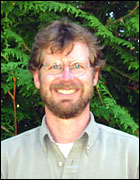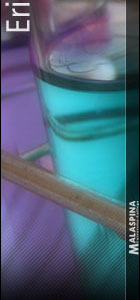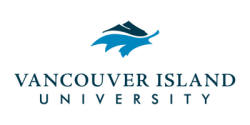


Research Interests
1. Real Time Studies of Contaminant Transformations in Natural
Environments
Work in the
AERL, has led to the ongoing development of an innovative and powerful
analytical technique known as
membrane introduction mass spectrometry
(MIMS). The technique uses a semi-permeable PDMS membrane as a
direct sample introduction platform to a quadrupole ion
trap mass spectrometer. Because no sample preparation is required,
this approach provides rapid quantification directly in the
complex sample mixtures. The technique is very sensitive for
volatile and semi-volatile organic compounds and can be used
to study contaminant processes in ‘real-time’ at
environmentally relevant concentrations and matrices.
MIMS has been demonstrated in our lab
to be a useful tool to investigate the fate and
distribution of volatile and semi-volatile organic pollutants
at low ppb concentrations in situ. For instance, studies in our labs
have followed the formation of dis-infection by-products in
drinking water and the photo-degradation of organic pollutants
in natural waters. This work will help us better understand
the role of naturally occurring dissolved organic matter and
the factors
that influence the photochemistry of xenobiotics in natural
waters.
2.
Development and Application of Membrane Based Analytical
Methods
Developing 'faster, better, cheaper' analytical methods is
important in it's own right as rapid detection has immediate
application in environmental monitoring, emergency response
and medical diagnosis. Furthermore, the novel
application of these techniques provides a unique opportunity
to investigate physico-chemical properties of both permeants
and new materials. We have recently constructed several
new membrane based sample introduction platforms which extend
the range and versatility of membrane inlet mass spectrometry.
These flow through systems provide time-resolved analytical
data, which allows for convenient study of dynamic processes.
In addition to studying the kinetics of chemical reactions, we
have recently applied our system to investigate membrane
transport phenomena. By analyzing the dynamics of the
non-steady state signal increase in response to a step
function increase in analyte concentration, we are able to
extract mass transport parameters such as has diffusion and
partition coefficients.
3.
Air & Water Quality - Land Use Interactions
Over the past decades, there has been
a growing appreciation environmental protection and an increased
awareness of the importance of a ‘source to tap’
approach to drinking water protection. Many of the threats
to water quality in coastal BC are important on a global scale and include such activities as agriculture, forestry,
mining, oil and gas exploration and urbanization. We are working
with several stakeholders and government agencies to get a
better understanding of land-water interactions. The AERL
has state-of-the-art instrumentation to measure nutrient ions
as well as dissolved organic carbon and nitrogen. We are
working to develop predictive tools that will help
guide future development and provide environmental
protection. In the laboratory,
we are working towards developing novel analytical tools,
such as membrane introduction mass spectrometry as a rapid
screening tool for biomarkers of both air and water quality.
One of the goals of our research will
be to identify key land-use water quality interactions that
are important in coastal watersheds. These studies will lead
to improved land use practices and better protection of drinking
water and aquatic ecosystems.
NSERC DISCOVERY GROUP GRANT
TITLE - Membrane
Introduction Mass Spectrometry
Positions Available
We are looking for qualified undergraduates
students to work on directed research projects either as
summer employment or CHEM 490. Our group is
currently seeking graduate students to work in collaboration
with the Applied Environmental Research Laboratories. For further information
please contact us directly (Erik. Krogh@viu.ca).
|



